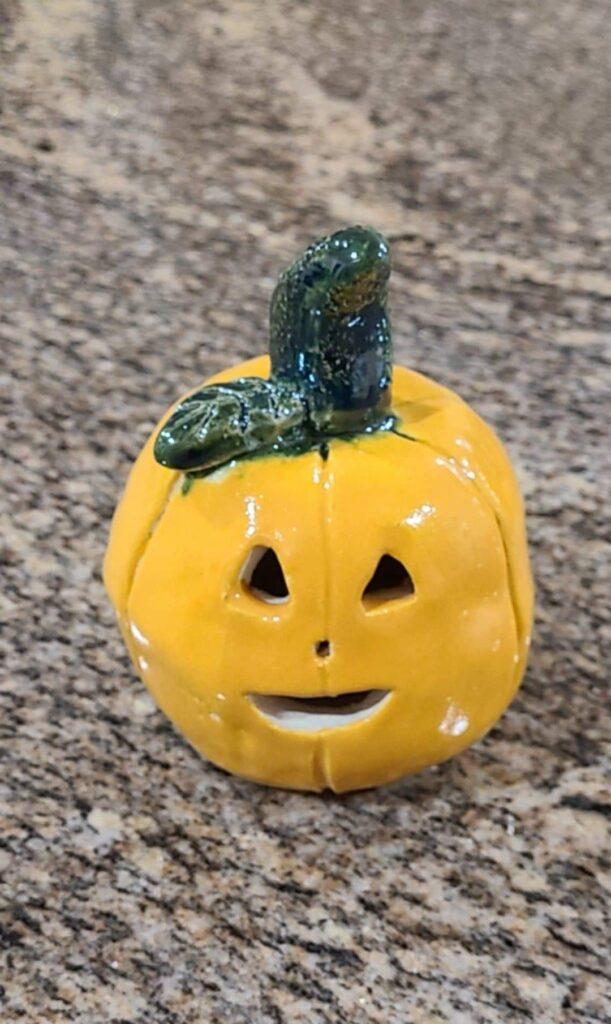Junior Henrik Zhang sat in his backyard one day this fall with a table during his sixth period, forming clay into the shape of a Halloween-themed candy corn pot. Beside him was his laptop, displaying Zoom as he followed ceramics teacher Diana Vanry’s demonstration. Materials like paintbrushes, paint and potter ribs lay on his other side.
For ceramics students like Zhang, this procedure has become routine. Since the beginning of virtual learning, hands-on classes like ceramics and engineering have undergone massive changes.
In the case of ceramics, students received tools (potter’s rib, fettling knife, loop tools), paints and paintbrushes during Falcon Fest in August. With these materials, they follow along with Vanry’s instructions during class to complete their pieces. Vanry also posts instructions on Canvas if students fall behind.
After finishing the clay base, students drop off their work at the school to be baked in the kiln and also pick up more clay if needed. Once their pieces are ready, students bring their clay home, paint them then bring them to school for a final round of baking. Students turn in a picture of their finished product for grading on Canvas.
As of now, projects have included tiny pots, leaves, feathers and owls.
“The drop-off process is pretty fun because you get to see a somewhat finished product,” Zhang said. “It’s also pretty fast as we can just pull up straight to the ceramics room in a car, so it takes only about five minutes.”
Despite Vanry’s best efforts, taking ceramics online is still vastly different online compared to in-person. Zhang said that taking the course virtually is “really hard” because of having to manage the clay by himself on top of a lack of in-person help from Vanry.
While senior Tyler Chu also faces the difficulty of not being able to get live in-person help from Vanry, he said the general flow of the class remains similar to what it would be like in-person.
“Even though Ms. Vanry can’t walk around the class to fix our technique, we’re doing the same projects that we would be doing in class,” Chu said. “But instead of having classmates to talk to, we get to play music or Netflix in the background as we work.
Chu added that the grading for ceramics consists of in-class participation which primarily consists of angling the camera so that Vanry can see them working. The grading of the final product is done when the students drop their work off at school.
“Despite the class being online, I really have enjoyed taking ceramics, especially during the stress of senior year,” Chu said. “After sitting at a desk all day, it’s really refreshing to be able to do something more hands-on.”


























